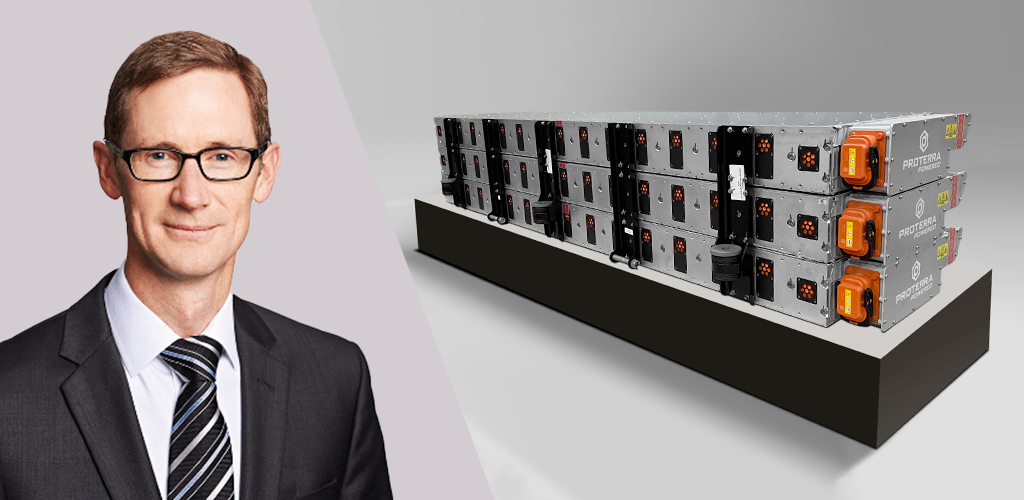How have your previous roles and experiences shaped your career path, leading you to join the leadership of Proterra?
I’m incredibly humbled by the opportunity to lead the team at Proterra, which is bringing industry-leading technology solutions to the commercial vehicle market today.
I’ve spent most of my career in operational and commercial roles across a range of industrial businesses. This includes automotive which I’m so passionate about and I’m excited to return to with Proterra.
What I’ve learned throughout my career journey is that to solve the climate challenge we face, we need technology solutions that can be adapted to many different use cases. It requires innovation and a suit of technology applications to make a real difference. For example, the needs of a battery-electric delivery vehicle like the Volta Zero present similar use cases, but also require different specifications than an electric transit bus. Innovation is at the heart of Proterra’s story and I’m thrilled to help lead a company that is tackling these diverse and unique opportunities for commercial vehicles head-on to truly address the climate risks we face.
Where does your passion for electromobility stem from?
My passion is fueled by the awesome responsibility we have to protect the environment as well as the opportunity we have to bring the next wave of innovation directly to communities around the world.
If we want our children and future generations to enjoy the earth as we have, it’s incumbent on us to take a leadership role to make the transformation happen. Leadership requires action. The more action we take and the more people we bring along with us on this journey towards zero emissions, the greater impact we can have together. This includes the work we’re doing with our Proterra Powered partners like Volta Trucks. I’m excited by the opportunity to help shape a cleaner, more prosperous future driven by innovative technologies like battery-electric vehicles.
Proterra manufactures electric transit busses; how does this knowledge and insight translate into batteries for electric trucks?
We know that what’s working in our fleet of transit buses can work in other applications like electric trucks.
Transit buses feature many of the same characteristics that make electrification ideal for commercial vehicle applications. This includes attributes like high mileage vehicles with poor fuel efficiency, fixed routes, and depot-based operations. Fleets need long life for their batteries and significant uptime.
The lessons we’ve learned manufacturing electric transit buses over the past decade have helped us shape our industry-leading battery systems to serve the commercial vehicle market. We’ve designed our technology so that it is adaptable to a wide array of vehicle types in a market where commercial vehicle customers require complex, large energy systems. We’re now on our fourth-generation battery system and our technology has been demonstrated through more than 20 million miles driven by our transit buses.
Proterra carries out a range of industry-level testing as part of its safety measures. It has also developed its own measures – how will these be of a benefit for the Volta Zero?
Successfully transitioning to an electric vehicle fleet requires a safe, reliable, and high-performing battery.
We manufacture our battery systems with safety mechanisms built directly into the battery architecture. This includes Passive Propagation Resistance, which in the rare event of a thermal event will isolate individual battery cells to prevent wider spread.
All Proterra battery systems undergo extensive testing designed to meet world-class safety standards so that Volta Zero customers and operators can have confidence that their vehicles will perform across a range of conditions and be better than the fossil fuel alternative.
How do you assess the overall sustainability of electric vehicle batteries, and what can be done to improve the media-reported CO2 consumption in battery manufacturing?
Sustainability is core to Proterra’s mission and DNA. We are incredibly proud that every time a Proterra Powered vehicle hits the road, that means less air pollution harming our health and environment.
Still, the drive towards zero-emissions extends beyond the vehicles we’re putting on the road around the world. Our industry has an incredible opportunity to be a leader as it relates to mitigating the environmental impact of manufacturing.
Each of our manufacturing plants, including our battery production facilities in California, have ISO certified Environmental Management Systems that guides things like energy and water consumption at our facilities. We just announced our third battery production facility where we are planning a solar installation to help power the factory with clean, renewable energy.
We also must consider the full life cycle of EV batteries from design and production to even what happens when a battery system has exhausted its useful life in a vehicle. For instance, once a Proterra battery pack has reached its end of life, the minerals can be extracted and reused, reducing the need to mine for new sources. When Proterra batteries have met their useful life in a vehicle, they retain a significant amount of energy that can also be used in second-life applications such as stationary energy storage.
This regenerative cycle of use and reuse can help drive down carbon emissions even further while unlocking more opportunities for battery technology to benefit our communities.
How does Proterra address the reported issues of the sourcing of precious metals in battery construction?
We source battery cells from suppliers who work in compliance with the OECD Due Diligence Guidance for Conflict Materials to ensure that no conflict materials, or any materials that cause violation of human rights, are used in our battery supply chain. Our cell suppliers have transparently applied a verification system for cobalt supply, which is audited by independent auditors, to prevent the use of minerals that have the possibility of human rights abuses.

